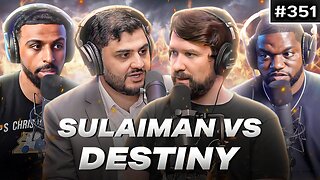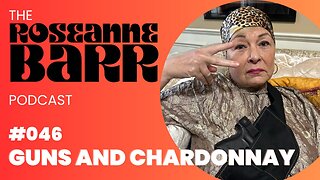Evil Ways Black Magic Woman Santana
Evil Ways Album: Santana (1969)
Black Magic Woman Album: Abraxas (1970)
Santana
Evil Ways was originally recorded by Willie Bobo in 1965; it was written by Bobo's guitarist, Sonny Henry. Bobo was Latin Jazz percussionist who was a big influence on Santana and played on some of their tracks in the late '70s. "He was one of the first guys who tried to merge Latin music and blues together on record," Carlos Santana said in The Guitar Greats by John Tobler and Stuart Grundy. "He did it before us, because we were doing it on the street, and he was already doing it on records."
Gregg Rolie, who joined Journey in 1973, sang lead on this. Carlos Santana, whom the band is named after, rarely took lead vocals but got plenty of guitar solos. His solo in Evil Ways is about 90 seconds long.
Santana made a huge impact at the Woodstock festival, where they included "Evil Ways" in their set. They hadn't released their first album yet, but had made a name for themselves playing live shows on the West Coast. Their manager, Bill Graham, got them on the bill, playing the same day as their San Francisco cohorts The Grateful Dead. Their first album, Santana, was released two weeks later amid the raft of positive press from Woodstock. The rhythmic chant track "Jingo" was issued as the first single from the album, reaching #56 in the US. "Evil Ways" was the next single, and it climbed to #9.
"Black Magic Woman" was a hit for Santana, but few people know that it's actually a cover of a 1968 Fleetwood Mac song that hit #37 in the UK. Peter Green, who was a founding member of Fleetwood Mac, wrote the lyrics.
Many also don't know that Santana started out as a blues band, just like Fleetwood Mac. "I used to go to see the original Fleetwood Mac, and they used to kill me, just knock me out," Carlos Santana said in the book The Guitar Greats. "To me, they were the best blues band."
Santana put their own spin on the song, incorporating Latin textures, but they kept the basic sound from the original intact.
The 1:49 instrumental at the end is called "Gypsy Queen," and was written by the Hungarian jazz guitarist Gabor Szabo. It was omitted from Santana's 1974 Greatest Hits album, even though radio stations usually play "Black Magic Woman" and "Gypsy Queen" as one song.
The original version is based on a blues song Peter Green wrote for Fleetwood Mac's first UK album called "I Loved Another Woman." Mick Fleetwood called the original version, "Three minutes of sustain/reverb guitar with two exquisite solos from Peter."
The royalties generated by Santana's cover of this song helped sustain the song's writer, Peter Green, after he left Fleetwood Mac. Green gave most of his money away when he left the band, and would have found himself destitute later in the '70s if he didn't get checks from his old hits.
After this was released, Peter Green befriended some people who were into black magic. In an interview with Cameron Crowe of Rolling Stone magazine, Christine McVie said these were the people who turned him on to acid, which led to Green leaving Fleetwood Mac.
Santana keybord player Gregg Rolie sang lead on this. He joined Journey in 1973.
For this song's solo, Santana played across the Latin rhythm on his Gibson Les Paul Special through the amp and rode the volume knob throughout the track to add sustain and distortion as required.
"Black Magic Woman" was the first single from Santana's second album, Abraxas, released in September 1970. In August 1969, they delivered one of the most memorable performances at Woodstock and released their debut album just two weeks later. Thrust into stardom, they toured constantly and didn't have much time to write new songs, so they included two covers on Abraxas; their version of Tito Puente's "Oye Como Va" was the second single from the album, and also a hit.
Their first three albums all fulfilled the promise of their Woodstock performance and made them one of the biggest bands in America, but in 1972 they started to fracture and went through a number of lineup changes. The band reinvented themselves many times over the years, with guitarist and namesake Carlos Santana the constant. In 1999, at a career nadir, they released one of the best-selling and most-acclaimed albums of that era: Supernatural.
1967-
Carlos Santana Guitar, vocals
Gregg Rolie Keyboards, vocals
David Brown Bass 1967-1971
Michael Shrieve Drums
Mike Carabello Percussion
Jose Chepito Areas Percussion
Neal Schon Guitar 1971-
Coke Escovedo Percussion 1971-
Tom Rutley Bass 1971-
The group formed in the Latin District of San Francisco. They are named after group leader Carlos Santana, and were originally known as the Santana Blues Band. It's one of the few popular groups named after a guitarist in the band (The J. Geils Band and Van Halen are others).
They appeared at both the original (1969) and second (1994) Woodstock. When they played the 1969 festival, they hadn't yet released their first album - their manager, Bill Graham, pulled some strings to get them on the bill. They went on sooner than expected, catching Carlos in the middle of a mescaline experience. "I was praying to God to keep me in time and in tune," he said.
Their performance was one of the most acclaimed and thrust them to stardom. As Graham predicted, it went to their heads: Carlos embraced an extravagant rock star lifestyle, but soon changed direction and went down a more spiritual path.
-
 1:44:46
1:44:46
Fresh and Fit
7 hours agoCRAZY Frank Castle On Disrespectful UNGRATEFUL Girl!w/ SNEAKO & SonnyFaz
137K228 -
 2:00:17
2:00:17
SNEAKO
10 hours agoSNEAKO X LAUREN CHEN
84.9K53 -
 1:12:09
1:12:09
Talk Nerdy 2 Us
8 hours ago🚨Cyber Siege: From White House Scandals to Global Cyber Threats 🚨
46.2K15 -
 26:49
26:49
Alexis Wilkins
15 hours agoBetween the Headlines with Alexis Wilkins: Michael Cohen on Tik Tok, Free Speech, AR Lectern, FDNY
49.9K33 -
 1:53:34
1:53:34
Fresh and Fit
1 day agoSulaiman Ahmed And Destiny Debate Israel Palestine Conflict!
187K357 -
 1:35:13
1:35:13
Roseanne Barr
13 hours ago $12.26 earnedGuns And Chardonnay | The Roseanne Barr Podcast #46
78.2K135 -
 58:25
58:25
The StoneZONE with Roger Stone
11 hours agoWill America’s Population Die? Is America Caught In A Death Spiral? Kevin Dolan Enters The StoneZONE
58.5K49 -
 1:21:14
1:21:14
Glenn Greenwald
12 hours agoPost-9/11 "Terrorism" Hysteria Returns With a Vengeance | SYSTEM UPDATE #266
95K271 -
 1:09:36
1:09:36
Tucker Carlson
11 hours agoAdvice to Men: Reject Sex, Parties, and Fame. Embrace God Instead.
151K172 -
 2:39:51
2:39:51
ZeroHedge
11 hours agoThe Great Crypto Vs Gold Debate
53.1K26